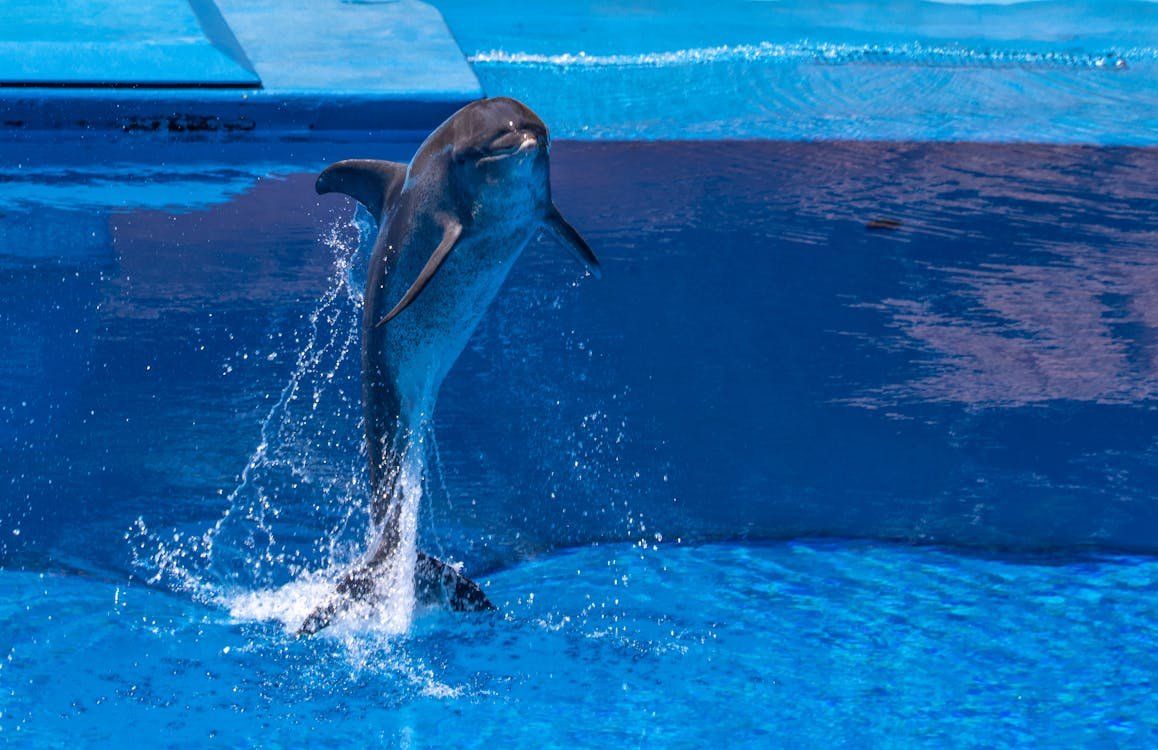Dolphins, with their playful nature and high intelligence, are often admired for their grace in the water. Beyond their captivating behaviors, dolphins have a fascinating and varied diet that reflects their adaptability to different environments. Depending on the species, region, and food availability, dolphins exhibit a range of feeding habits. Let’s dive into what dolphins eat and how they hunt.
The Dolphin Diet: A Diverse Menu
Dolphins are carnivores, meaning their diet is made up exclusively of other animals. However, the specifics of what they eat depend on their species, the region they inhabit, and the availability of prey. Here’s an overview of what most dolphins typically consume:
1. Fish
Fish are a staple for many species of dolphins. From small schooling fish like herring, mackerel, and sardines to larger fish like tuna and cod, dolphins rely on fish for the majority of their diet. Fish provides the high-energy fats and proteins dolphins need to sustain their active lifestyle.
- Bottlenose Dolphins, one of the most well-known species, are particularly fond of fish like mullet, trout, and catfish.
- In colder regions, dolphins tend to eat larger fish species, while in tropical areas, they consume smaller fish.
2. Squid and Cephalopods
Some species, especially those living in deeper waters, also rely on squid and other cephalopods. Squid is more abundant in the deep sea, so dolphins in these areas adapt their hunting strategies to capture them.
- Spinner Dolphins and Risso’s Dolphins are examples of species that frequently feed on squid, especially at night when squid migrate toward the surface.
3. Crustaceans
While less common, some dolphins may also feed on crustaceans like shrimp and crabs. This usually happens in coastal regions where these animals are more abundant. Smaller dolphin species, like the Hector’s Dolphin, may include crustaceans as part of their diet.
4. Octopuses
Dolphins are known to eat octopuses, though handling this prey requires particular skill due to the octopus’s tentacles and ability to escape. Dolphins shake the octopus against the water’s surface to subdue it before eating.
Hunting Techniques: Intelligence and Cooperation
Dolphins are exceptional hunters, using a combination of intelligence, echolocation, and social cooperation to capture their prey. Here are some of their most impressive hunting techniques:
1. Echolocation
One of the most well-known tools in a dolphin’s hunting arsenal is echolocation. Dolphins emit sound waves through clicks and listen for the echoes that bounce back off objects in their surroundings. This sonar-like ability allows them to locate prey even in murky waters or total darkness.
- Echolocation is particularly useful for detecting schools of fish and locating squid in the deep ocean.
2. Cooperative Hunting
Dolphins are social animals, and many species hunt in groups called pods. These pods work together to herd schools of fish into tight balls, making it easier to pick off individual fish. This technique, known as herding or corralling, is often seen in dolphins that prey on schooling fish.
- In some cases, dolphins will drive fish toward shallow waters, where they are trapped against the shoreline or sea surface, making them easier to catch.
3. Mud Ring Feeding
Bottlenose dolphins in certain areas, like Florida’s coastal waters, have developed an ingenious technique called mud ring feeding. In this method, dolphins circle around a school of fish while stirring up mud with their tails, creating a ring. The confused fish try to jump out of the “ring,” only to leap right into the waiting mouths of the dolphins.
4. Fish Whacking
Dolphins have been observed using their tails to smack fish into the air, stunning or disorienting them, making them easier to catch. This behavior, known as fish whacking, is a high-energy but effective technique.
5. Strand Feeding
A particularly dramatic method, strand feeding involves dolphins swimming rapidly toward shore to push fish onto the land or into very shallow waters. The dolphins will temporarily beach themselves to catch the fish before sliding back into deeper water. This technique is mostly observed in areas where fish schools venture close to the shore.
Adaptability and Regional Differences
Dolphins are incredibly adaptable and can adjust their feeding behaviors based on their environment. For instance:
- River Dolphins, which live in freshwater habitats, often feed on river fish and crustaceans.
- Dolphins living in the open ocean tend to eat a diet dominated by squid and large fish, while coastal dolphins rely more heavily on smaller fish and crustaceans.
- Some dolphins, like Orcas (which are actually the largest species of dolphin), have a much more varied diet that can include marine mammals like seals, sea birds, and even sharks.
Conclusion
Dolphins are more than just playful swimmers—they are skilled, intelligent hunters with an impressive range of hunting techniques and dietary preferences. Their ability to adapt to different environments and work together in groups ensures their survival in a variety of marine habitats. Whether they’re using echolocation to track prey in deep waters or employing intricate group strategies to trap fish, dolphins demonstrate that they are truly masters of the sea.

